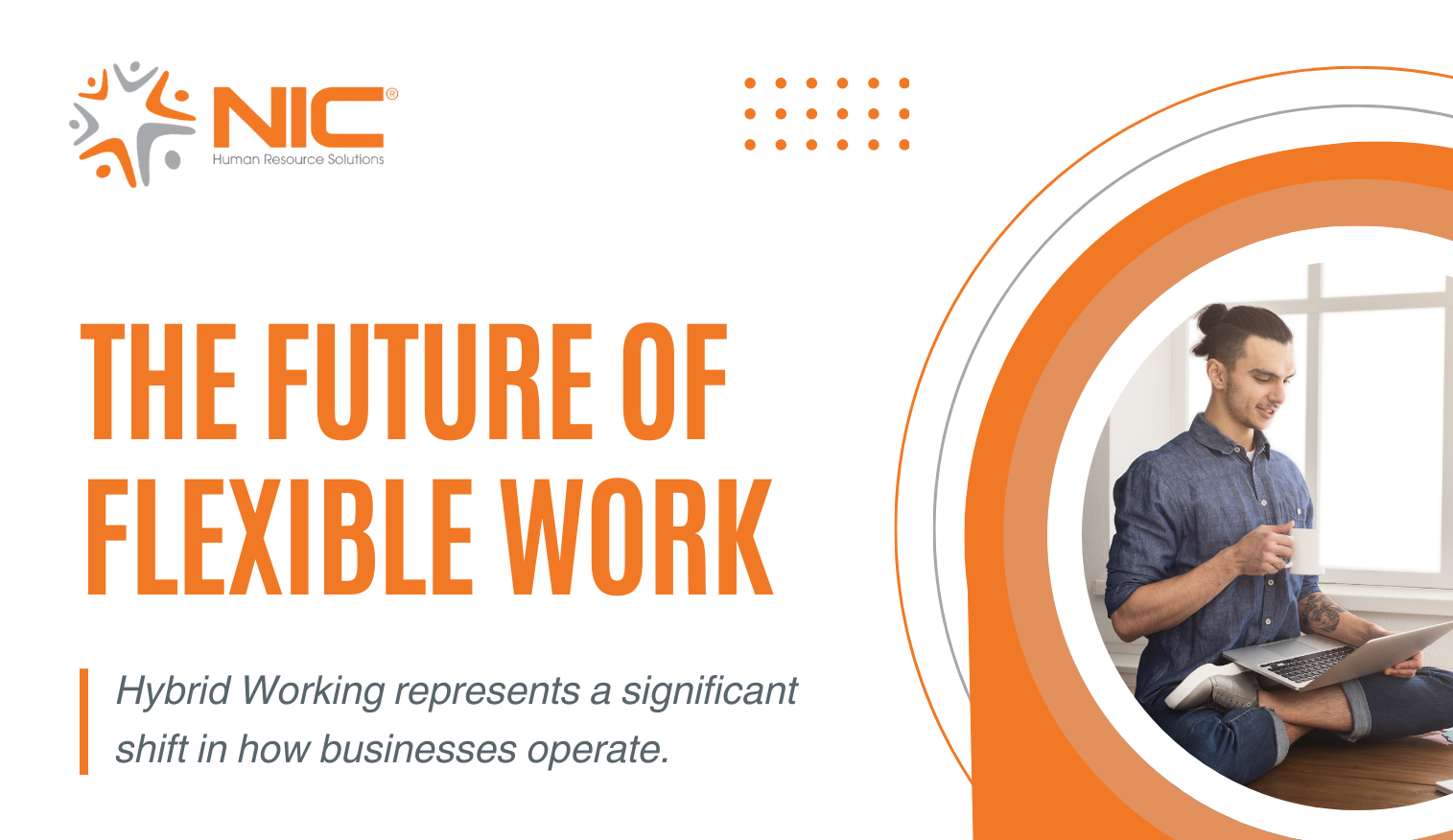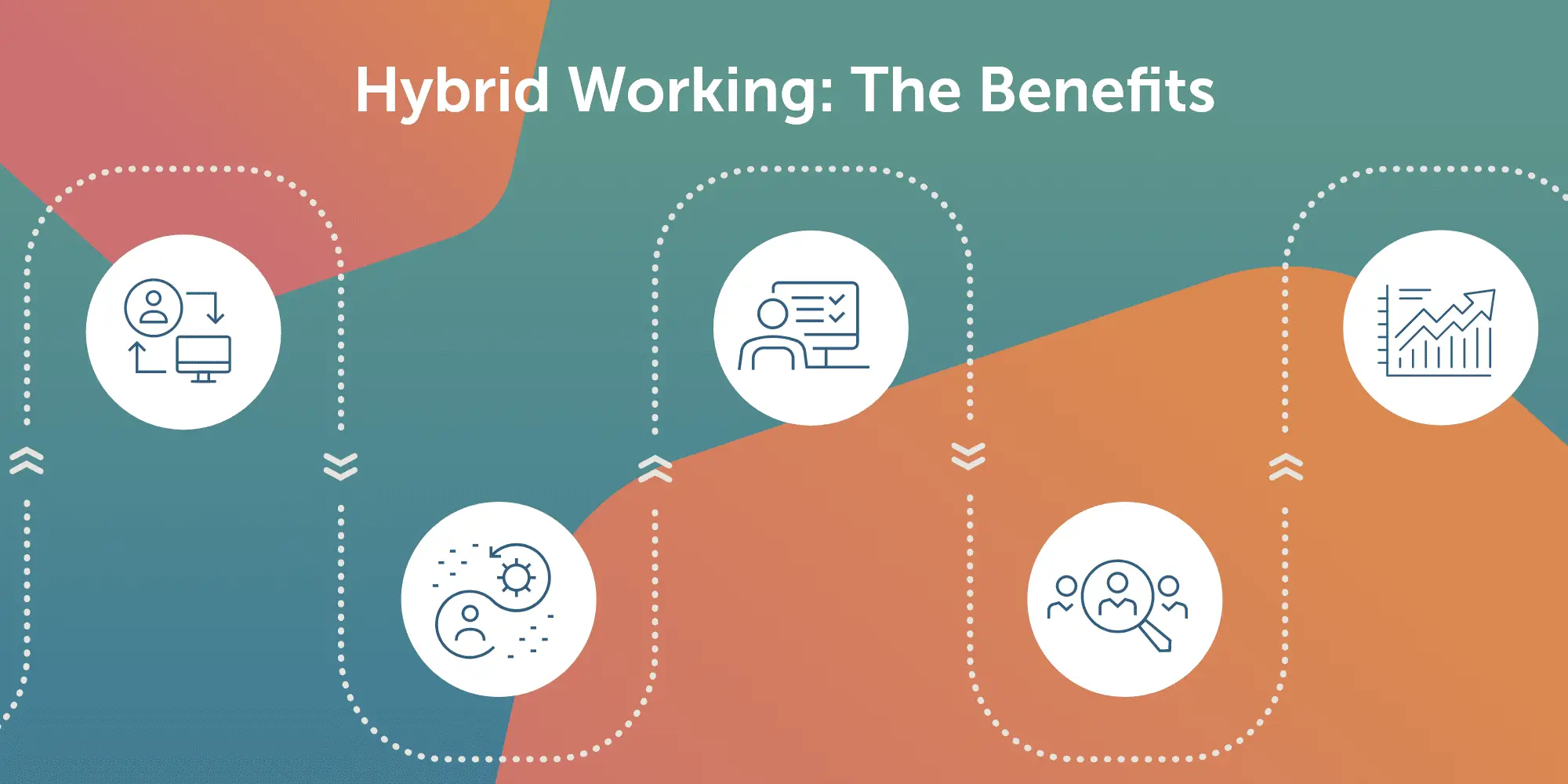Hybrid Working: The Future of Flexible Work in the Digital Era
25/11/2024
In today’s increasingly connected world, Hybrid Working is rapidly gaining traction as a game-changing work model that meets the needs of both employers and employees. No longer constrained by the four walls of an office, businesses are adopting flexible working arrangements that allow employees to blend remote work with in-office collaboration. But what exactly is Hybrid Working, and why is it becoming the go-to work model for companies worldwide?
In this article, NIC Global will provide an in-depth analysis of Hybrid Working, its benefits, and the various forms it can take. We’ll also explore how this working model has gained popularity in Vietnam and what businesses need to know to implement it effectively.

1. What is Hybrid Working?
Hybrid Working refers to a flexible work model where employees split their time between working remotely (from home, cafes, and co-working spaces) and being physically present in the office. The hybrid model is designed to allow employees to work from different locations, depending on the nature of their tasks and personal preferences.
Unlike fully remote or entirely in-office work models, Hybrid Working gives employees control over their schedules while still allowing for critical face-to-face interactions with colleagues on designated office days. This balance creates a dynamic work environment that enhances both productivity and employee satisfaction.
Example: A company might allow employees to work from home three days a week and require them to be in the office on two specific days for meetings or collaborative work.

2. The Rise of Hybrid Working in Vietnam
The COVID-19 pandemic was a major catalyst for the rise of Hybrid Working in Vietnam. During the height of the pandemic, businesses were forced to adopt remote work practices to ensure continuity. Even after the pandemic subsided, many companies realized the benefits of allowing employees to work from home and have continued to offer flexible work arrangements.
Both employee demand and business benefits largely drive this shift. On one hand, workers appreciate the flexibility to manage their personal and professional lives. On the other hand, businesses are seeing improvements in cost efficiency and employee retention. Hybrid Working has become a sustainable model that accommodates modern workforce needs, and it’s only expected to grow in popularity.
3. The Benefits of Hybrid Working
Hybrid Working brings numerous advantages to employees and employers, making it a preferred choice for companies looking to stay competitive in the digital age.

3.1. Flexibility in Time and Location
One of the primary benefits of Hybrid Working is the flexibility it offers employees. In traditional work models, employees are required to be present at the office for a set number of hours each day. However, with Hybrid Working, they can choose when and where they work best.
Some employees may be more productive early in the morning, while others work more effectively in the evening. The flexibility to work during peak productivity hours allows employees to optimize their output and manage their responsibilities.
3.2. Improved Work-Life Balance
By offering employees more control over their work schedules, Hybrid Working enables them to achieve a better work-life balance. This is especially important for employees juggling personal commitments such as childcare or elder care. The ability to work remotely for part of the week reduces stress and enhances overall job satisfaction.
Research shows that employees with control over their schedules are generally more engaged and motivated, which ultimately benefits the company through increased productivity.
3.3. Wider Talent Pool and Global Recruitment
Another significant advantage of Hybrid Working is the ability to recruit talent globally. Since employees no longer need to be physically present in the office every day, companies can expand their recruitment efforts beyond their local area. This opens up the opportunity to hire highly skilled professionals from different regions and cultures, enhancing organizational diversity and innovation.
For example, a company based in Hanoi can hire a software engineer from Ho Chi Minh City or abroad without requiring relocation, making it easier to access top talent.
3.4. Cost Savings
For employers, Hybrid Working can lead to significant cost savings. By reducing the need for large office spaces, businesses can reduce real estate costs, utilities, and office maintenance. Additionally, employees may save on commuting expenses, and companies can adjust certain allowances, such as transportation stipends.
Many companies are now considering downsizing their office spaces, using shared workspaces, or allowing employees to work remotely most of the time, thus drastically reducing operational expenses.
4. Popular Forms of Hybrid Working
There isn’t a one-size-fits-all approach to Hybrid Working. Different businesses implement the model in various ways to suit their operational needs. Here are some of the most popular forms of Hybrid Working:
4.1. Hybrid At-Will
In this model, employees have full control over when they come to the office and work remotely. This model offers maximum flexibility, allowing individuals to tailor their work schedules based on personal preferences and job demands.
4.2. Hybrid Split-Week
With Hybrid Split-Week, companies designate specific days for in-office work and other days for remote work. For instance, a business might have employees work from the office on Mondays and Thursdays, while allowing them to work remotely on other days. This method ensures a balance between collaboration and flexibility.
4.3. Hybrid Manager-Scheduling
In this model, managers decide when their team members need to be in the office or can work remotely based on project deadlines or team needs. This approach works well for teams that require close collaboration on certain days but can work independently.
4.4. Hybrid Mix
The Hybrid Mix combines elements of all the other models. Some employees may have the flexibility to choose their workdays, while others may follow a more structured schedule based on team requirements. This approach offers flexibility and structure, accommodating various roles within the company.
5. Implementing Hybrid Working Effectively
To successfully implement Hybrid Working, companies must establish clear guidelines and ensure open communication between managers and employees. Here are a few best practices to consider:
- Set Clear Expectations: Define when employees are expected to be in the office and what work can be done remotely. Clear communication is key to avoiding confusion and ensuring everyone is on the same page.
- Leverage Technology: Utilize digital collaboration tools like Slack, Zoom, and project management software to facilitate communication and teamwork across different locations.
- Foster Team Culture: Even with remote work, it’s essential to maintain a strong sense of company culture. Regular check-ins, team-building activities, and social events (even virtual ones) can help keep employees engaged and connected.

Conclusion: The Future of Work is Hybrid
As we continue to navigate the complexities of the digital era, Hybrid Working represents a significant shift in how businesses operate. Offering flexibility, cost savings, and global recruitment potential, it’s no wonder that this working model is here to stay.
For businesses looking to attract top talent and retain employees in a competitive job market, Hybrid Working could be the key to long-term success. At NIC Global, we specialize in helping companies adapt to modern work environments with tailored HR solutions, including hybrid work strategies that drive performance and employee satisfaction.
Contact us today to learn how we can help you implement Hybrid Working at your organization.
For contact and support:
Facebook: NIC Global – Human Resource Solutions
Linkedin: NIC Global Sourcing JSC
Website: www.nicvn.com
Email: info@nicvn.com
Hotline: 0981.23.43.76
Address:
- Hanoi Office: No. 3A Thi Sach, Pham Dinh Ho Ward, Hai Ba Trung District, Hanoi, Vietnam
- Ho Chi Minh City Office: Dakao Center Building, 35 Mac Dinh Chi, District 1, Ho Chi Minh City, Vietnam
See more:
Payroll service
Staffing service
EOR service





